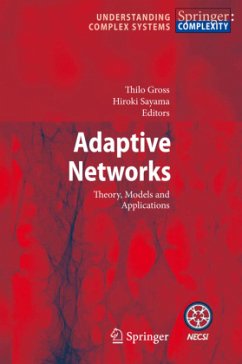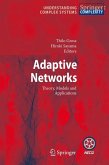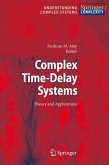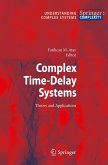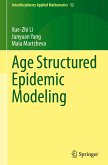Adding one and one makes two, usually. But sometimes things add up to more than the sum of their parts. This observation, now frequently expressed in the maxim "more is different", is one of the characteristic features of complex systems and, in particular, complex networks. Along with their ubiquity in real world systems, the ability of networks to exhibit emergent dynamics, once they reach a certain size, has rendered them highly attractive targets for research. The resulting network hype has made the word "network" one of the most in uential buzzwords seen in almost every corner of science, from physics and biology to economy and social sciences. The theme of "more is different" appears in a different way in the present v- ume, from the viewpoint of what we call "adaptive networks." Adaptive networks uniquely combine dynamics on a network with dynamical adaptive changes of the underlying network topology, and thus they link classes of mechanisms that were previously studied inisolation. Here adding one and one certainly does not make two, but gives rise to a number of new phenomena, including highly robust se- organization of topology and dynamics and other remarkably rich dynamical beh- iors.
From the reviews: "The book contains an exhaustive overview of various examples of realistic adaptive networks, some theoretical arguments on their behaviour and some methodological tools that can be applied in various situations. It contains 14 contributions by influential authors in the field ... . the book contributors have a different disciplinary background gives to this book an interesting inter-disciplinary flavour that modellers in any field will appreciate." (Floriana Gargiulo, Journal of Artificial Societies and Social Simulation, Vol. 13 (1), 2010) "The volume articulates this perspective and provides a collection of groundbreaking research papers that illustrate its potential. ... The chapters are independent contributions, each with its own bibliography ... . However, the way the chapters were selected and organized leads to an overall flow that is easy to follow, and renders the volume an important and accessible reference for researchers." (H. Van Dyke Parunak, ACM Computing Reviews, January, 2010) "The volume would ... serve as a good introduction to, and overview of, research on adaptive networks for someone entering the field. ... contains fourteen invited contributions, plus an introductory chapter by the editors. ... Overall, Adaptive Networks is a solid collection that brings together diverse facets of an exciting and growing field with many opportunities for further research." (Nicholas Geard, Artificial Life, Vol. 16 (4), 2010)

